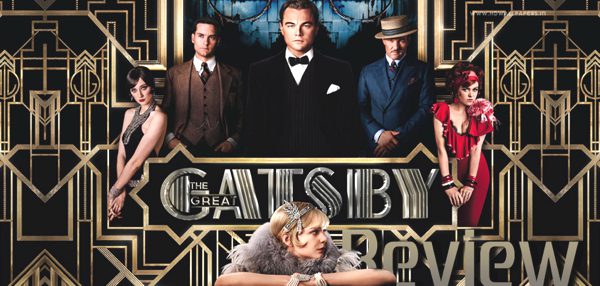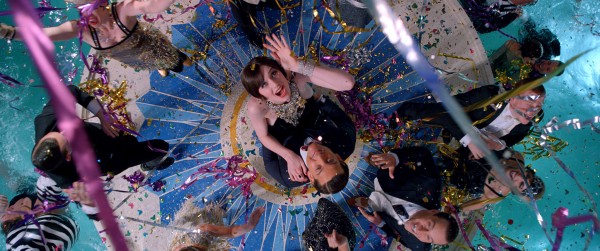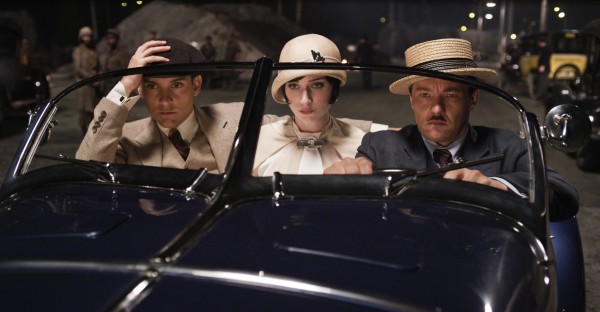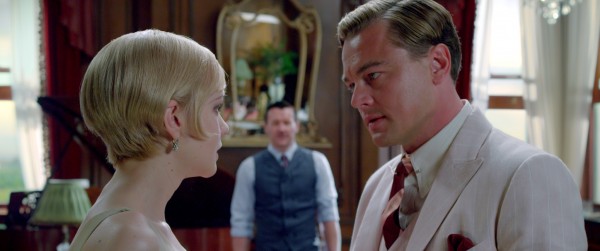
With films like Iron Man 3 and Star Trek: Into Darkness in theaters you might ask yourself how The Great Gatsby fits in. I’m here to tell you that it fits in just fine. With an average shot time of less than five seconds (I know, I counted) Baz Luhrmann’s Gatsby is more kinetic and distractingly edited than any of the action fare it competes with. All Michael Bay has to do when confronted with arguments of his sometimes incomprehensible editing style is point to The Great Gatsby.
Let me state for the record that in equally incomprehensible fashion, I have read the book The Great Gatsby twice and I have seen the Robert Redford version of the film twice, and yet despite my great experience, having actually studied this book in school, I remember nothing except the ending. I guess it didn’t make that much of an impression. But I do remember it having a generally slower pacing and a sense of melancholy. This latest film has none of that. It’s either full blast crazy or full blast sad and angry. Nuance is missed. Nick Carraway (Tobey Maguire) narrates the experience of his meeting the titular J. Gatsby (Leonardo DiCaprio). Carraway is not a big city guy and is taken in by the bewildering experience of the temptations in the city, including the various experiences he has when his neighbor Gatsby takes a liking to him. Luhrmann depicts all of this in a wild set of flashy scenes, cutting between one crazy image after another, leaving only enough time per image for them to barely register before being replaced by another crazy image. I feel like Luhrmann’s vision of Gatsby would do damage to a still developing child’s brain and it certainly hurt mine.
Gatsby throws wild parties that are filled with hundreds of only the most amazing and flashy individuals. The camera cuts crazily back and forth around the events to the extent that I began to wonder what the point of staging such huge crowds and intricate dance numbers was when we never saw more than five seconds of them from a few different angles. It seemed like such a waste. Every individual shot was well staged and beautifully rendered in only the most vibrant of colors. Each shot was a set piece in and of itself. But the end effect made me sad, rendering all this splendor to nothing more than a flip book or maybe more accurately a coffee table book. Amazing work that you only really glance at before putting away.
I really enjoyed DiCaprio as Gatsby, who has to go through a series of status ranges from complete control to angry and lost. We learn he’s throwing these parties just to woo over his long lost love Daisy (Carey Mulligan). DiCaprio’s acting talent shows through when he meets Daisy for tea. All of his worldly and sheik cool goes out the window and we are presented with our first and only glimpse of endearing humor as Gatsby becomes too nervous to be in the room. Despite the strange editing, the humanity shows through. And this is the point where to movie started improving for me.
As the content of the story gets darker and we see Gatsby trying to break up Daisy’s marriage, I got more absorbed into the process. I don’t think the number of edits changed but I felt like the swapping of images fit together better. Not as discordant. Or maybe I’m just making it up. Maybe I felt like the movie started to follow the tone of the book better and so it all worked more. But in the famous high speed car ride home with Daisy in which they hit and kill a woman, Luhrmann goes back to the crazy, wild hijinks of before, focusing more on the CGI of driving a car than the actual mood that was needed. And once again I was pulled out of the story.
Joel Edgerton is fine as Tom Buchannan, husband of Daisy and foe of Gatsby. He’s completely unlikeable and commands attention when on screen. His mental duel with Gatsby at the lunch table and in his private suite when he figures out Daisy is waning in her faithfulness is probably the best showing of character. But there’s not much depth overall. He’s a jerk and everything he does is jerky. So by the end of the film when Daisy and Tom ride off together, instead of feeling the underlying story of the allure of wealth and power and how corruptible we all are towards false gods, instead of feeling pity or sadness or resigned understanding, all I thought was “what a bunch of jerks.” And I’m not really sure that’s what F. Scott Fitzgerald wanted us to feel.
So I give a mixed recommendation towards this film. The phantasmagoric imagery would be better suited in a movie called “Fear and Loathing in Los Gatsby”. A few days later I watched one of my more favored films, Michael Clayton, again. It acts like a palette cleanser. Whereas Gatsby has almost no shots longer than five seconds, Clayton has full on single camera moves over a minute long. The last image of that movie being a silent, lengthy shot of a man sitting in the back of a cab. And it suffers not from taking its time. But that being said, as Gatsby settled into its more serious side, I enjoyed it more. So it’s not a total loss. Take it for what it is. The imagery is interesting but it doesn’t work for great chunks and yet manages to leave an okay taste when it’s all said and done.
Maybe we should call it The OK Gatsby.




You must be logged in to post a comment.